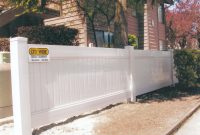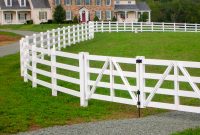 Gallery First Fence Of Georgia Residential Commercial throughout sizing 1995 X 1120
Gallery First Fence Of Georgia Residential Commercial throughout sizing 1995 X 11203-Rail Split Rail Fence With Wire Mesh: A Cost-Effective and Versatile Fencing Option
3 Rail Split Rail Fence With Wire Mesh – A 3-rail split rail fence is a type of fence that is made up of three horizontal rails that are supported by vertical posts. The rails are typically made of wood but can also be made of metal or plastic. Wire mesh is often attached to the top rail of a 3-rail split rail fence to provide additional security or to keep animals in or out. The wire mesh can be made of galvanized steel, aluminum, or plastic.
3-rail split rail fences are popular for fencing properties because they are relatively inexpensive to install and maintain. They are also relatively easy to build, which makes them a good option for DIYers.
Benefits of Using a 3-Rail Split Rail Fence With Wire Mesh
There are many benefits to using a 3-rail split rail fence with wire mesh. Some of the most notable benefits include:
- Inexpensive: 3-rail split rail fences are relatively inexpensive to install and maintain. The cost of materials and labor is typically much lower than other fences, such as wood privacy fences or chain link fences.
- Easy to build: 3-rail split rail fences are relatively easy to build, which makes them a good option for DIYers. The basic construction is simple, and many online tutorials and resources can help you with the process.
- Versatile: 3-rail split rail fences can be used for a variety of purposes, such as:
- Fencing in livestock
- Providing privacy
- Securing a property
- Defining boundaries
- Durable: 3-rail split rail fences are durable and can withstand the elements. The wood or metal rails are resistant to rot and corrosion, and the wire mesh provides additional strength and security.
Drawbacks of Using a 3-Rail Split Rail Fence With Wire Mesh
No type of fence is perfect, and 3-rail split rail fences with wire mesh are no exception. Some of the drawbacks of this type of fence include:
- Not as secure as other fences: 3-rail split rail fences are not as safe as other fences, such as wood privacy fences or chain link fences. Small animals can easily climb the wire mesh, and the gaps between the rails allow larger animals to pass through.
- Requires more maintenance than other fences: 3-rail split rail fences require more maintenance than different fences, such as wood privacy fences or chain link fences. The wood or metal rails need to be stained or painted regularly to protect them from the elements, and the wire mesh may need to be replaced if it becomes damaged.
- Not as aesthetically pleasing as other fences: 3-rail split rail fences are not as aesthetically pleasing as different fences, such as wood privacy fences or chain link fences. The rustic appearance of the wood or metal rails may not be to everyone’s taste.
Choosing and Installing a 3-Rail Split Rail Fence With Wire Mesh
If you are considering installing a 3-rail split rail fence with wire mesh, there are a few things you need to keep in mind.
Choose the correct type of wood or metal for your fence. The kind of material you choose will depend on your budget, the climate you live in, and the level of security you need.
- Wood: Wood is a popular choice for 3-rail split rail fences because it is inexpensive and easy to work with. However, it is essential to choose a type of wood resistant to rot and decay, such as cedar or redwood. If you live in an area with a lot of snow, you may also want to choose a type of wood that is strong enough to withstand the weight of the snow.
- Metal: Metal is a more durable option than wood, but it is also more expensive. Metal fences are also more challenging to install than wood fences. If you choose to use metal for your wall, you will need to make sure that the posts are set in concrete or gravel to prevent them from shifting.
Here are some additional factors to consider when choosing the right type of material for your fence:
- Budget: Wood is the most affordable option, followed by metal.
- Climate: If you live in an area with a lot of snow or rain, you must choose a material that is resistant to the elements.
- Security: If you need a high-security fence, choose an unsuitable material to climb or break through.
Once you have chosen the suitable material for your fence, you can start planning the installation. Be sure to follow all safety precautions and consult with a professional if you are not sure how to install the fence yourself.
Make sure the posts are correctly set. The seats are the foundation of your fence, so it is essential to ensure they are correctly set. The posts should be placed in concrete or gravel to prevent them from shifting.
Use the correct type of wire mesh. The wire mesh should be strong enough to withstand the elements and the animals you are trying to keep out.
Install the fence properly. The wall should be installed level and square. The wire mesh should be taut and secure.
Maintain your fence regularly. Your wall will need to be stained or painted periodically to protect it from the elements. The wire mesh may need to be replaced if it becomes damaged.
Conclusion
3-rail split rail fences with wire mesh are an excellent option for homeowners looking for an inexpensive, easy-to-build, and versatile fence. However, it is essential to be aware of the drawbacks of this type of fence before making a decision.
Frequently Asked Questions (FAQ) section about 3-rail split rail fences with wire mesh:
Q: How much does installing a 3-rail split rail fence with wire mesh cost?
A: The cost of installing a 3-rail split rail fence with wire mesh will vary depending on the size of the wall, the type of material used, and the labor cost in your area. However, you can expect to pay between $10 and $20 per linear foot for materials and labor.
Q: What type of wood should I use for my 3-rail split rail fence?
A: If you choose to use wood for your fence, it is essential to select a type of wood resistant to rot and decay. Some good choices include cedar, redwood, and pressure-treated pine.
Q: How do I set the posts for my 3-rail split rail fence?
A: The posts are the foundation of your fence, so it is essential to set them correctly. The posts should be placed in concrete or gravel to prevent them from shifting.
Q: How do I install the wire mesh for my 3-rail split rail fence?
A: The wire mesh can be attached to the posts using staples or wire. Be sure to stretch the wire mesh taut to ensure a secure fence.
Q: How do I maintain my 3-rail split rail fence?
A: Your fence must be stained or painted regularly to protect it from the elements. The wire mesh may need to be replaced if it becomes damaged.
Q: What are the benefits of using a 3-rail split rail fence with wire mesh?
A: There are many benefits to using a 3-rail split rail fence with wire mesh. Some of the most notable benefits include:
- Inexpensive
- Easy to build
- Versatile
- Durable
Q: What are the drawbacks of using a 3-rail split rail fence with wire mesh?
No type of fence is perfect, and 3-rail split rail fences with wire mesh are no exception. Some of the drawbacks of this type of fence include:
- Not as secure as other types of fences
- Requires more maintenance than different types of fences
- Not as aesthetically pleasing as different types of fences


